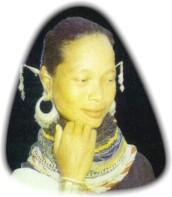Development in Tripura proper was slower than in other princely states, largely because of poor economic conditions. State revenues were supplemented by the Raja's zamindari in British Bengal, but these were insufficient for more than the very basic reforms. It is only with the reign of Maharaj Bir Chandra Kishore, in the last quarter of the nineteenth century that the first tentative steps towards reform and development began. However, no determined programme emerged until the reign of Maharaj Kirit Birendra Kishore during the second decade of the twentieth century. Perhaps due to his modern education his outlook may have been more receptive to change. Despite modest means, he reformed the revenue system, the courts, police, and army, built roads, hospitals and schools. He contracted marriages with several Nepalese princesses and sent his sons and brothers to be educated in modern institutions outside the state. Many of these princes acquired skills valuable to the administration and development of their homeland.
Maharaja Bir Bikram Kishore succeeded his father aged fifteen 1923, reigning under the guidance of his powerful uncles. For several years he ruled under a Council of Regency, a form of rule which usually prompted a deeper interest in state affairs by British officials. A series of administrative and other reforms were encouraged, education expanded, communications and infrastructure improved. When the young Maharaja assumed full control, the state was on a par with other princely states. His keen interest in military affairs were to stand in good stead, particularly when the War in Burma reached India's borders and the Japanese threatened invasion. The small Tripura army served with distinction and honour, winning several decorations for gallantry. Amongst the latter, the Maharaja's own younger brother.
Maharaja Bir Bikram Kishore's early death in 1947 left his throne to his fourteen year old son, Maharaja Kirit Bikram Kishore. This was a crucial time, not only because of British withdrawal and the subsequent uncertain status of the princes, but also due to the birth of East Pakistan. Tripura faced an immediate refugee problem, which brought conflict between the people, severe strain on the administration and threatened to exhaust the meagre resources of the state. The Maharaja's mother who had assumed charge as Regent at her husband's death, was forced to cede sovereignty to India within a few months.
By January 1948 the central government had assumed charge and the state continued to be ruled directly for many years. Tripura has now been recognised as a state of the Indian Union in its own right and democratic government has been in place for thirty years. However, large sections of the population have long been unhappy about the Indian annexation and have campaigned vigorously against it. Armed liberation groups continue to operate in many parts of the state where the writ of the Indian government does not run.
The Maharaja and his family largely reside in Calcutta, but continue to play a very active part in the cultural and political life of Tripura. Several members of the family have served in the state legislature and in the national parliament in Delhi, the Maharaja, his wife, his uncles and cousins amongst that number.


